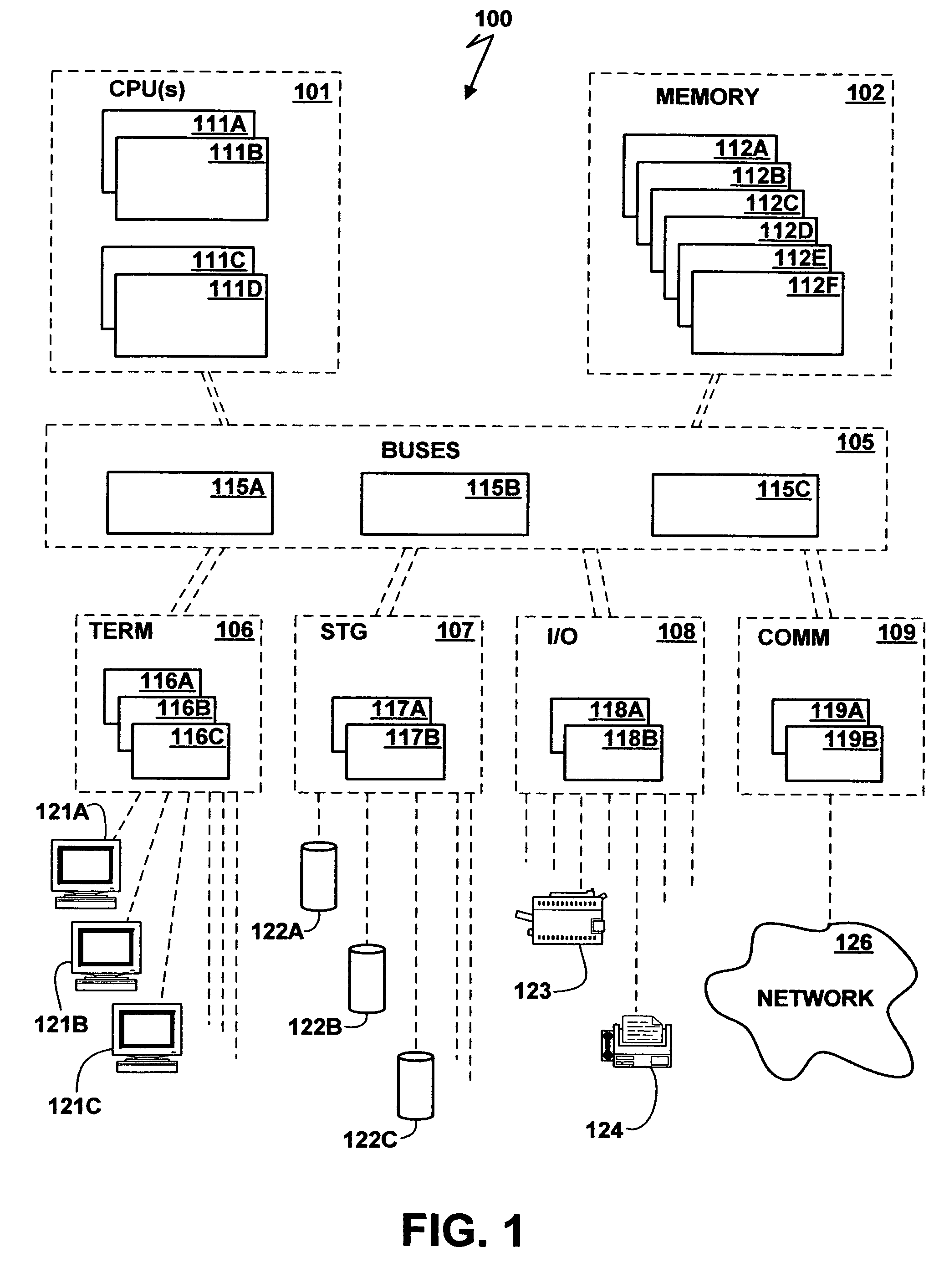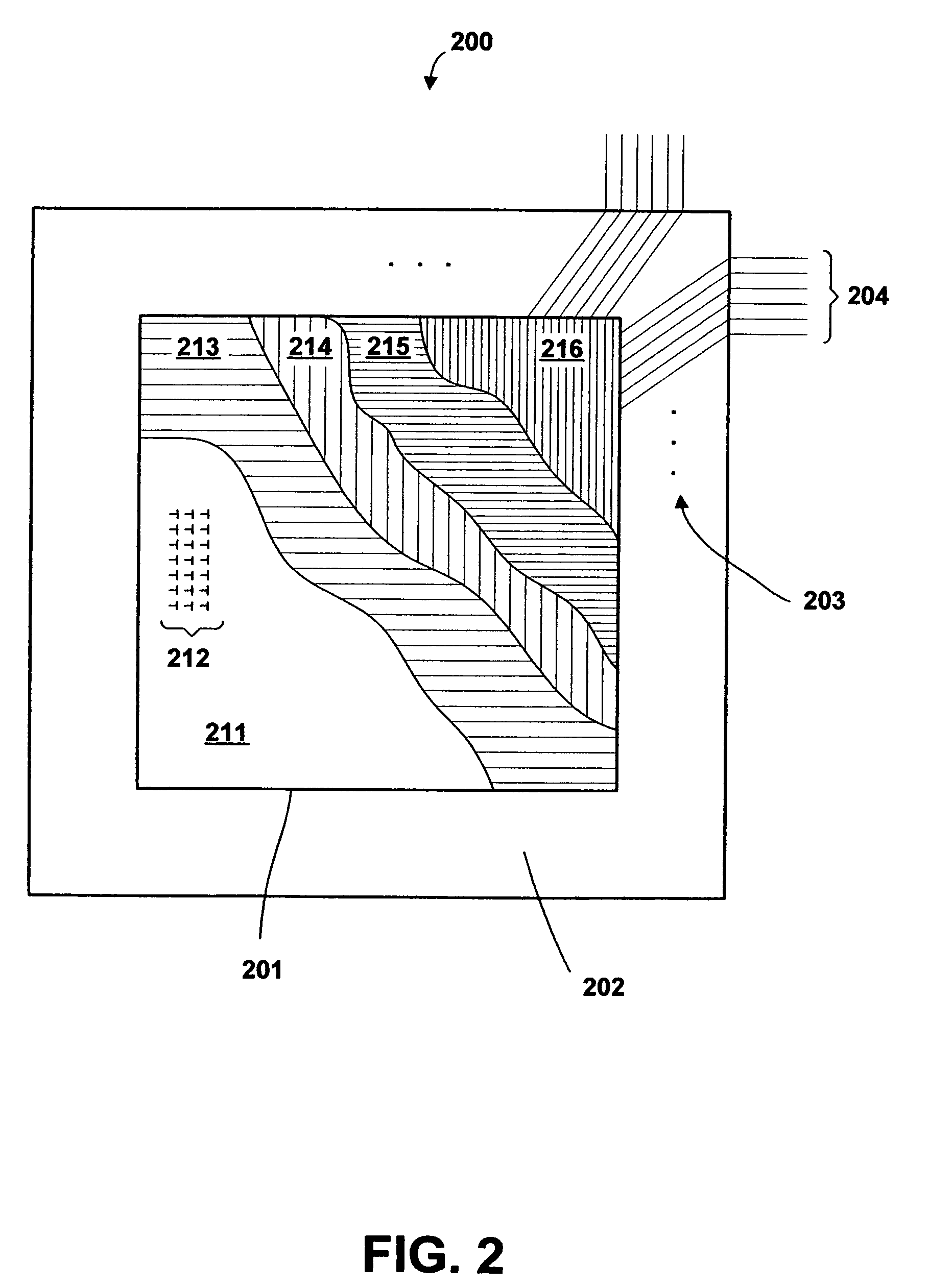Integrated circuit chip utilizing dielectric layer having oriented cylindrical voids formed from carbon nanotubes
a carbon nanotube and integrated circuit technology, applied in the direction of electrical equipment, semiconductor devices, semiconductor/solid-state device details, etc., can solve the problems of difficult to ensure, the designer's parasitic capacitance becomes a significant problem, and the clock speed is necessarily limited, so as to reduce the dielectric constant
- Summary
- Abstract
- Description
- Claims
- Application Information
AI Technical Summary
Benefits of technology
Problems solved by technology
Method used
Image
Examples
Embodiment Construction
[0026]Referring to the Drawing, wherein like numbers denote like parts throughout the several views, FIG. 1 is a high-level representation of the major hardware components of a computer system 100 for utilizing integrated circuits having carbon nanotube conductors, according to the preferred embodiment of the present invention. At a functional level, the major components of system 100 are shown in FIG. 1 outlined in dashed lines; these components include one or more central processing units (CPU) 101, main memory 102, terminal interface 106, storage interface 107, I / O device interface 108, and communications / network interfaces 109, all of which are coupled for inter-component communication via one or more buses 105.
[0027]CPU 101 is one or more general-purpose programmable processors, executing instructions stored in memory 102; system 100 may contain either a single CPU or multiple CPUs, either alternative being collectively represented by feature CPU 101 in FIG. 1, and may include ...
PUM
| Property | Measurement | Unit |
|---|---|---|
| dielectric constant | aaaaa | aaaaa |
| depth | aaaaa | aaaaa |
| thick | aaaaa | aaaaa |
Abstract
Description
Claims
Application Information
 Login to View More
Login to View More - R&D
- Intellectual Property
- Life Sciences
- Materials
- Tech Scout
- Unparalleled Data Quality
- Higher Quality Content
- 60% Fewer Hallucinations
Browse by: Latest US Patents, China's latest patents, Technical Efficacy Thesaurus, Application Domain, Technology Topic, Popular Technical Reports.
© 2025 PatSnap. All rights reserved.Legal|Privacy policy|Modern Slavery Act Transparency Statement|Sitemap|About US| Contact US: help@patsnap.com



